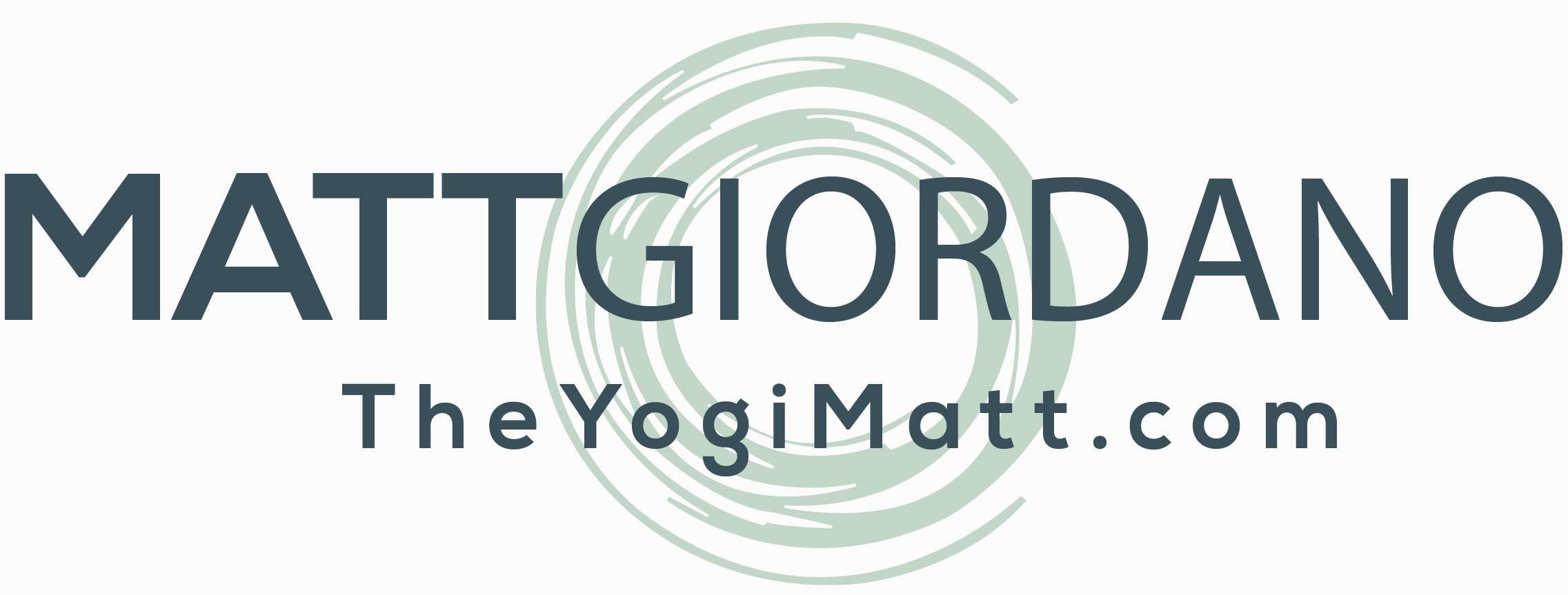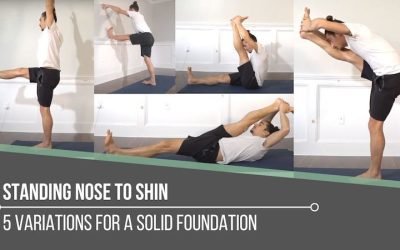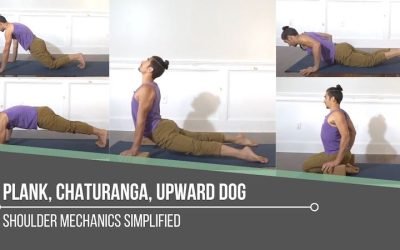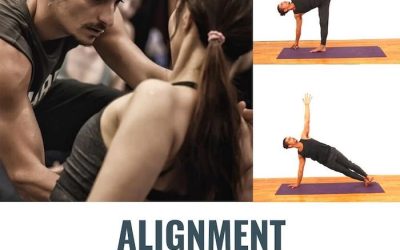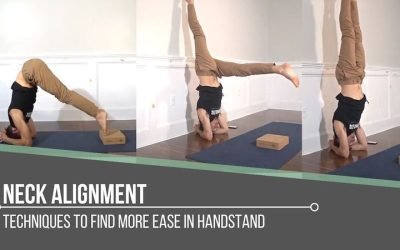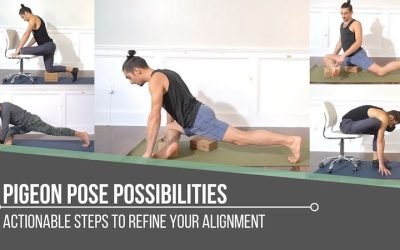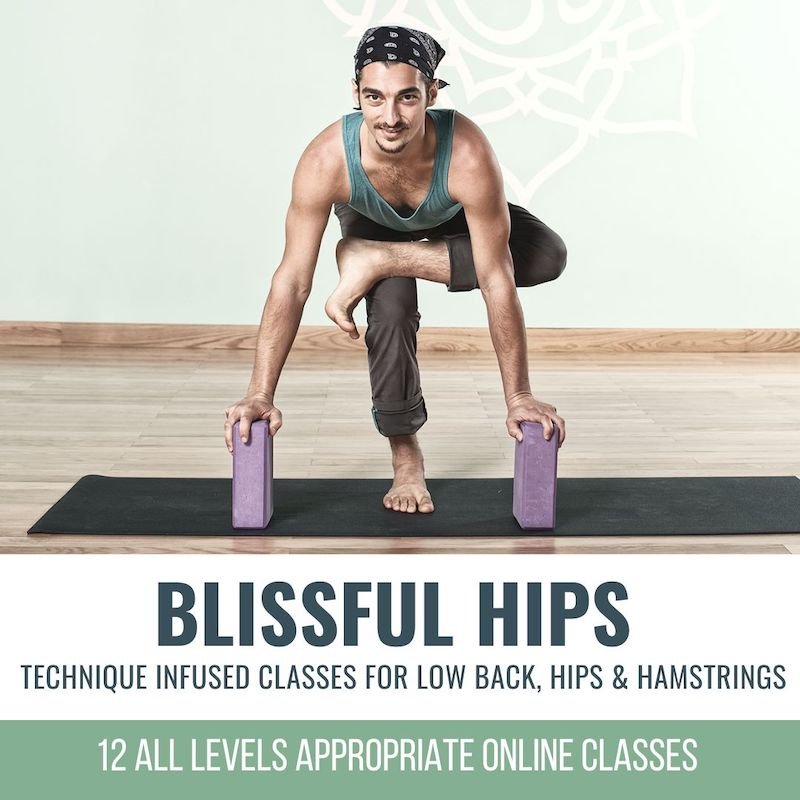Standing Nose to Shin Variations for a Solid FoundationstrengthSTANDING NOSE TO SHIN Standing Nose to Shin is an exceptional preparatory posture for Hanumanasana, or Splits Pose, but it is an equally profound posture on its own. It also requires thoughtful...
Samskaras
Samskaras
What Have You Decided About You & Your Yoga Practice?
BELIEF
SAMSKARAS
Even though we uncover a great deal about our bodies in our asana practice, we actually unearth much more from the other areas of our yoga practice. If we get the opportunity to delve deeper into the philosophy of yoga, it can take us places that will challenge our sense of self. In Matt’s 300 Hour Yoga Teacher Training and in his recent The Power of Bliss immersion, he describes the teachings about samskaras. What are samskaras? He breaks it down explicitly in today’s clip by saying that they are patterns or grooves of the mind, developed through your life’s experiences. When something happens to you, your brain looks for similar circumstances in order to easily organize and understand them. What you’ll receive from today’s video is an opportunity to consider what patterns and beliefs you’ve developed in mind and body.
THE SHOULDER RESET
2-HOUR LIVESTREAM WORKSHOP!
- Technique-infused 2-hour workshop
- Non-dogmatic alignment awareness
- Chest/heart flexibility
- Increase active range of motion of the shoulder
- Learn shoulder anatomy as you practice
- Strengthen rotator cuff for stability and shoulder health
- Gain access to shoulder-focused postures
- Debunk popular alignment
- Skillfully guided sequence by the founder of Chromatic Yoga, Matt Giordano
HOW DO SAMSKARAS PRESENT THEMSELVES?
A good example might be that when someone says or does something we’ve heard before or recognize as familiar, the brain, or the ego aspect of ourselves, jumps in with the opinion that the outcome will be exactly the same as it was in the past. Unfortunately, if the experiences are negative, it’s easy to get stuck in the pattern and continue to expect the same results. This may cause a sense of hopelessness, making it difficult to see beyond our current circumstances.
The beauty of the yoga practice is that, as the journey unfolds, we come to understand that we have the ability to challenge and transform the samskaras that do not serve us but have still become “our story.” This ability doesn’t mean that the process is easy, nor does it mean that there’s an end point. We are always experiencing new things.
WATCH THE VIDEO
SAMSKARAS: WHAT HAVE YOU DECIDED ABOUT YOU & YOUR YOGA PRACTICE?
WHAT IS NEUROPLASTICITY?
Cultivating the awareness that we can be an observer of our thoughts is a step in the right direction towards transformation. Transformation itself, however, requires more than just changing our minds.
Taking command to cause an actual shift can be described as “burning samskaras,” which is a way to think about physiologically changing the neural pathways in our brain. This is also known as neuroplasticity:
“Neuroplasticity, also known as neural plasticity or brain plasticity, is a process that involves adaptive structural and functional changes to the brain. A good definition is ‘the ability of the nervous system to change its activity in response to intrinsic or extrinsic stimuli by reorganizing its structure, functions, or connections.’”
When this has taken place, our new intuitive response is to access what serves us.
200 HOUR ONLINE TEACHER TRAINING
GET CERTIFIED & DEEPEN YOUR YOGA PRACTICE
- Deepen your yoga practice
- Build confidence speaking in front of groups in person and online
- Learn foundational class structures and templates
- Learn techniques for a wide range of yoga postures
- Get certified and highly qualified to teach yoga
- Yoga Alliance Globally Recognized Certification Program
SAMSKARAS AND OUR BODIES
As we age, we can fall into the pattern of thinking that we’re just too old to do certain things. We may also believe that if we haven’t been able to execute a particular posture or find more flexibility in the past, then this will always be true.
These samskaras are created through messages we’ve been told and through experiences we’ve had in our bodies, which convince us that this is our eternal reality.
In today’s clip, Matt skillfully walks us through the techniques to find greater access in Parivrtta Hasta Padangusthasana. This posture may seem completely reasonable and accessible already, or it may seem too difficult to attempt.
Consider for a moment that we actually have the ability to execute this posture by taking step-by-step action with Matt’s techniques. It’s possible to transform our experience and thus change our belief about what is possible.
300 HOUR ONLINE TEACHER TRAINING
GET 500 HOUR CERTIFIED AS A MASTER TEACHER
Master your skill set as a teacher through refined techniques, anatomy, biomechanics, sequencing, philosophy, meditation techniques, theming, yoga business, and much more!
- Get 500 hour certified
- Learn anatomy, biomechanics, asana techniques
- Expand your teaching skills
- Masterful sequencing and verbal delivery
- Learn meditation and breathwork techniques
- Transformative tools: theming, dharma talks, satsang
EVOLVING OUR BELIEF SYSTEMS
So, what is it that you believe about yourself? Asking yourself a question like this can be scary.
We might encounter confusion and resistance when we first begin to probe.
Having the guidance of a teacher to assist us in gaining a deeper understanding of what it means to burn our samskaras and evolve our belief systems about our minds and bodies can provide a more fluid pathway.
For example, Matt’s upcoming online workshop, called The Shoulder Reset, is a great entry point to learn more about what is possible in your body. Shoulder injuries are common, but when we learn more about anatomy, technique, and biomechanics and about how to apply this knowledge to our own bodies, we can explore new possibilities.
New information may present itself as access to new postures, less pain after an injury, and a new story to believe about ourselves.
The 200 Hr. Teacher Training: Click Here to See the Next Start Date
The 300 Hr. Advanced Teacher Training: Click Here to See the Next Start Date
Article by Trish Curling
Videos Extracted From: Power of Bliss Immersion
ONLINE ANATOMY COURSE
- Accessible, exciting, and easy to learn
- Anatomy and biomechanics for yoga
- Appropriate for both teachers and students
- Learn joint alignment vs pose alignment
- Demystify yoga poses and transitions
- Release aches and pains
- Learn how to avoid common injuries
- Caters to all levels with modifications and props
- 20 hours Continued Education Credits with Yoga Alliance
- 20 hours toward Chromatic Yoga Certification and 300 Hour
- Lifetime access
Continue Learning
Standing Nose To Shin
Strengthen Your Adductor Muscles
Strengthen Your Adductor Muscles Incorporate These Drills Into Your Yoga PracticeactivationSTRENGTHEN YOUR ADDUCTOR MUSCLES The adductor muscles are commonly left as a lower priority when it comes to building strength in your yoga practice. It’s not that there aren’t...
Plank, Chaturanga, Upward Dog
Plank, Chaturanga, Upward Dog Shoulder Mechanics SimplifiedALIGNMENTPLANK, CHATURANGA, UPWARD DOG How many times have you heard the cue “Plank, Chaturanga, Upward Dog” in a yoga class? If you’re a regular practitioner, it’s probably quite often (particularly in...
Eagle Pose Legs
Eagle Pose Legs Pelvic Articulations to Find the BindgarudasanaEAGLE POSE Eagle is a yoga posture that can really highlight the relationship between your pelvis and your hips. Of course, the more you understand your body and how it works, the more you begin to...
Neck Alignment
Neck Alignment Techniques to Find More Ease in HeadstandsirsasanaNECK ALIGNMENT FOR INVERSIONS Yoga postures typically start “from the feet up.” The same is true when it comes to inversions—it’s just flipped upside down. The positioning of the head and neck sets the...
Pigeon Pose Possibilities
Pigeon Pose Possibilities Actionable Steps to Refine Your AlignmentkapotasanaPIGEON POSE The word "possibility" is so powerful—it’s deeply connected to the word "hope." Possibilities is an even better word because that means there are multiple options, with more...
THE FREE TECHNIQUE PACK
When You Subscribe, You Will Get Instant Access to
- the Technique Pack: 15 yoga pose breakdowns
- exclusive online course discounts
- exclusive blogs and videos
